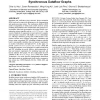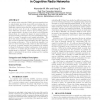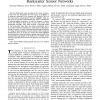746 search results - page 43 / 150 » Near-Optimal Radio Use for Wireless Network Synchronization |
104
click to vote
ICC
2007
IEEE
15 years 6 months ago
2007
IEEE
With the advent of cognitive radio technology, new paradigms for spectrum access can achieve near-optimal spectrum utilisation by letting each user sense and utilise available s...
DAC
2006
ACM
16 years 25 days ago
2006
ACM
Simulation and verification using electronic design automation (EDA) tools are key steps in the design process for communication and signal processing systems. The synchronous dat...
112
click to vote
MOBICOM
2009
ACM
15 years 6 months ago
2009
ACM
In cognitive radio networks (CRNs), spectrum sensing is key to opportunistic spectrum access while preventing any unacceptable interference to primary users’ communications. Alt...
TWC
2008
14 years 11 months ago
2008
Backscatter radio is proposed for sensor networks. In that way, the transmitter for each sensor is simplified to a transistor connected to an antenna and therefore, the cost for ea...
IPSN
2009
Springer
15 years 6 months ago
2009
Springer
As sensor networks mature, there will be an increasing need for re-usable, dynamically taskable software systems that support multiple concurrent applications. In this paper, we c...



